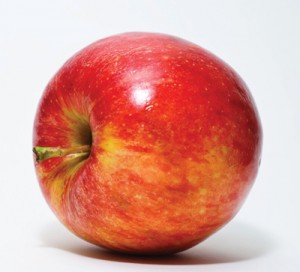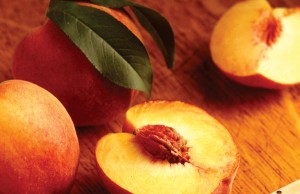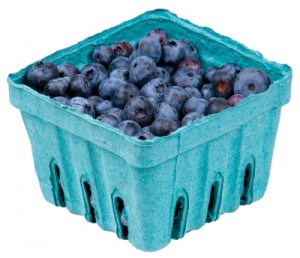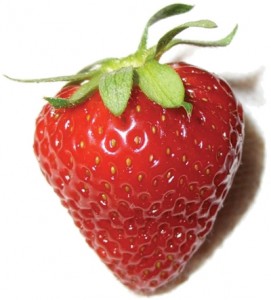Backyards Aren’t Just for Orange Trees Anymore
Worried about citrus greening disease and canker? Cheer up! Though the orange is recognized as Florida’s state fruit, home gardeners have other options when it comes to backyard crops. Citrus is the most common fruit grown in Central Florida, but it’s certainly far from the only choice to produce a home orchard. There are numerous types of delicious, nutritious fruit that can be successfully cultivated in this region and are, in fact, elbowing orange trees out of the way.
 Snowbirds and plant enthusiasts may fondly think of apple blossom time during the spring season of the Midwest or New England. It used to be unheard of to grow apples, peaches, nectarines, plums, and other “stone” fruits in Florida because these crops required up to 1,700 “chill hours” (temperatures below 45 degrees) to successfully blossom. However, in the past few decades, the University of Florida agriculture department and other nurseries have developed hybrid fruits that only need 200 to 300 chill hours. Grafting mature fruit limbs onto nematode resistant root stock also allows stone fruits to flourish in our sandy soil. Local plant nurseries now carry apple varieties such as Anna, Golden Dorsett, Tropic Sweet, and Ein Shemer ─ all rivaling their northern cousins in taste. How ‘bout them apples? Due to a scarcity of apple trees in Florida, it’s necessary to have two different varieties of trees on your property to get a decent crop. Your personal harvest will surely help you consume at least ‘an apple a day.’
Snowbirds and plant enthusiasts may fondly think of apple blossom time during the spring season of the Midwest or New England. It used to be unheard of to grow apples, peaches, nectarines, plums, and other “stone” fruits in Florida because these crops required up to 1,700 “chill hours” (temperatures below 45 degrees) to successfully blossom. However, in the past few decades, the University of Florida agriculture department and other nurseries have developed hybrid fruits that only need 200 to 300 chill hours. Grafting mature fruit limbs onto nematode resistant root stock also allows stone fruits to flourish in our sandy soil. Local plant nurseries now carry apple varieties such as Anna, Golden Dorsett, Tropic Sweet, and Ein Shemer ─ all rivaling their northern cousins in taste. How ‘bout them apples? Due to a scarcity of apple trees in Florida, it’s necessary to have two different varieties of trees on your property to get a decent crop. Your personal harvest will surely help you consume at least ‘an apple a day.’
 Peaches and nectarines are a great choice to create a bountiful backyard orchard in Florida. These fruits are self-pollinating so you only need one tree. Plus, these plants are resistant to most diseases. Low chill peach varieties include both white and yellow flesh offerings such as Tropic Snow, Florida Prince, Florida King, and Zorrito. Unlike citrus, which can take as long as five years before producing good fruit, peaches produce tasty fruit within one to two years of planting.
Peaches and nectarines are a great choice to create a bountiful backyard orchard in Florida. These fruits are self-pollinating so you only need one tree. Plus, these plants are resistant to most diseases. Low chill peach varieties include both white and yellow flesh offerings such as Tropic Snow, Florida Prince, Florida King, and Zorrito. Unlike citrus, which can take as long as five years before producing good fruit, peaches produce tasty fruit within one to two years of planting.
In the olden days, the only type of plums grown in Central Florida was the small, wild variety. However, the University of Florida has once again come to the rescue and developed low chill hour, grafted plums that gardeners can now purchase in local nurseries. Varieties include the Gulf Beauty, Gulf Rose, Gulf Ruby, and Gulf Gold. Like apples, plums require two different varieties for cross pollination.
Another cold hardy crop becoming increasingly popular is blueberries. Florida blueberry bushes are easy to grow in containers so long as the soil is kept acidic. Pests are few and the crops plentiful. However, once again, you’ll experience a much better yield by using  several different cultivars within your yard. The more the merrier! Varieties to consider include Emerald, Jewel, Windsor, Misty, Gulf Coast, and Bountiful Blue.
several different cultivars within your yard. The more the merrier! Varieties to consider include Emerald, Jewel, Windsor, Misty, Gulf Coast, and Bountiful Blue.
With a fresh understanding of how traditionally northern fruits can now tolerate the southern heat, let’s examine various southern fruits that can endure our Central Florida cold. Yes, Floridians can experience difficult climate changes. Just a few nights a year can break a gardener’s heart, freezing tropical fruits that survive just fine the other 360 days. No matter how “cold hardy” a tropical fruit claims to be, some nights during the winter months do require the majority of tropical fruit trees to be covered and/or protected with a heat source.
Avocados (“mid-shipman’s butter”) are a favorite to those with a green thumb and can grow just fine here in Central Florida. No, you can’t grow the huge varieties found in South Florida and the Keys. However, the medium-sized green and black varieties that flourish have excellent flavor. Plant growers have recently created more cold tolerant avocados that can withstand light freezes without too much damage. Avocado options to consider include the Joey, Lula, Poncho, Winter Mexican, and Mexicola. Do NOT attempt to grow an avocado from a seed. Non-grafted trees take over 15 years to produce fruit (but are worth the wait)! Avocados are basically self-pollinating, but two different types of trees will result in a better crop.
 Mangos are another Florida favorite that, with a little common sense cold protection, can give gardeners a wonderful backyard crop of fruit. Mangos are self-pollinating, can grow up to 20 feet tall, and take several years to produce good fruit, much like citrus. Popular Central Florida varieties include the Haden, Keitt, Nam Doc Mai, and Kent. Whereas, papayas are very fast growingfruit trees that need to be completely protected from freezing weather. They can actually be grown as an annual native in Central Florida if planted early enough in the spring. You may get a crop of papayas before winter arrives, within 6 to12 months, then simply re-plant another tree. Varieties include the Red Lady, Maridol, and Solo.
Mangos are another Florida favorite that, with a little common sense cold protection, can give gardeners a wonderful backyard crop of fruit. Mangos are self-pollinating, can grow up to 20 feet tall, and take several years to produce good fruit, much like citrus. Popular Central Florida varieties include the Haden, Keitt, Nam Doc Mai, and Kent. Whereas, papayas are very fast growingfruit trees that need to be completely protected from freezing weather. They can actually be grown as an annual native in Central Florida if planted early enough in the spring. You may get a crop of papayas before winter arrives, within 6 to12 months, then simply re-plant another tree. Varieties include the Red Lady, Maridol, and Solo.
Go bananas! Once again, the largest varieties won’t grow in our short Central Florida season, but small types such as the Lady Finger, Dwarf MacIntosh, and Ice Cream banana reliably produce sweet fruit year after year with just sun, water, and fertilizer. Easy as banana cream pie!
Be sure to investigate other fruits such as the Barbados cherry and the cherry of the Rio Grande, sapote, carambola (star fruit), fig, grape, blackberry, guava, moringa (horseradish tree), jaboticaba, loquat, pecan, pineapple, macadamia nut, miracle fruit, sugar-apple, pomegranate, soursop, and monstera deliciosa. Some of these fruit varieties are well known, other are more exotic, and some are just plain fun to grow. Backyards really aren’t just for orange trees anymore! Orange you glad to have more native (and hybrid) fruit choices?






